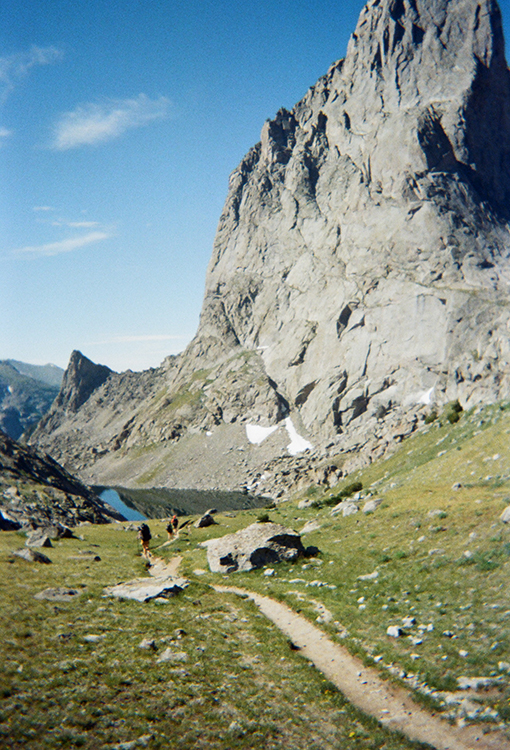
HELP ENSURE OUR NATURAL AREAS REMAIN PRISTINE
Leave No Trace: How To Preserve Our Wilderness Areas
Before heading into your next backcountry adventure, ensure you’re prepared on ways to mitigate your impact on the environment you’ll be traveling through.
With the increasing popularity of long distance backpacking and outdoor recreation in general, it becomes vital to address the environmental impact of this pursuit, which brings us to the topic of Leaving No Trace.
Leave No Trace (LNT) is a set of outdoor ethics and principles that promote responsible and sustainable outdoor recreation. The core idea behind Leave No Trace is to minimize the impact of human activities on the environment, particularly in natural and wilderness areas. Thru hikers, section hikers, or weekend warriors play a crucial role in setting an example and encouraging others to protect the very lands we love. We believe that every hiker should take this responsibility upon their shoulders to preserve the very landscapes they cherish.
The Essence of Leave No Trace Principles
Leave No Trace, often abbreviated as LNT, is a set of seven principles designed to encourage responsible outdoor practices.
- Plan ahead and prepare
- Travel and camp on durable surfaces
- Dispose of waste properly
- Leave what you find
- Minimize campfire impact
- Respect wildlife
- Be considerate of other visitors
1. Plan ahead and prepare
Planning ahead goes into many different measures. It’s important to look at all the supplies you will need while being out in the woods from cooking to using the bathroom. Make sure the area you’ll be heading into isn’t requiring any special permits, storage containers, or other things that could catch you off guard.
While cooking you’ll want to plan your meals thoughtfully before heading into the backcountry. Opt for foods with minimal packaging to reduce waste or cut down on the packaging before you leave by combining foods in the same bags. Consider repackaging food into reusable containers to minimize single-use packaging. Bring only the amount of food you will consume to avoid food waste.
Before your hike, research the area you’ll be visiting to understand specific regulations and guidelines regarding human waste disposal. Some areas may have designated toilet facilities or require the use of specific methods. Pack all the necessary supplies, including a small trowel, toilet paper, and a sealable waste bag (such as a Ziploc bag with black tape around it to hide its contents).
2. Travel and camp on durable surfaces
When you’re hiking or moving through the wilderness, stick to established trails and designated paths because these trails are designed to withstand the wear and tear of foot traffic, minimizing soil erosion and damage to the surrounding ecosystem. Whenever possible, choose established campsites that have been designated by land management agencies or trail authorities. They’ll be more comfortable, flat, and oftentimes protected by trees. These sites are sometimes equipped with amenities like fire rings and tent pads to concentrate impact in specific areas which can be a big blessing to weary travelers.
If you’re camping in areas without designated campsites, look for established tent sites that have already been used by previous campers. Avoid creating new tent sites, as this can lead to soil compaction and damage to vegetation. Never trample on or disturb vegetation, avoid walking on fragile plants, and be mindful of where you place your tent and gear to minimize impact. Make sure you’re at least 200 feet away from any water sources while setting up camp.
3. Dispose of waste properly
Human Waste
In areas with no established restroom facilities, use the “cathole” method:
- Dig a small hole approximately 6-8 inches deep and 6 inches in diameter using a trowel or other digging tool. Many people measure the hole by digging it as deep as their trowel.
- Do your business in the hole.
- Afterward, use a stick to mix the waste with soil thoroughly.
- Fill the hole with soil and disguise it to blend with the surrounding terrain.
- Mark your hole either with two sticks to mark an “X” or an already dislodged rock to prevent future hikers from digging out your hole.
- Pack out used toilet paper in a sealable bag, as it doesn’t decompose quickly.
In more heavily used areas, some locations may require the use of portable toilets or “wag bags” that seal and contain waste for proper disposal later. The most common areas for this are those above tree-line or balds where there is no dig-able surface.
Solid Waste (Trash)
Pack out all trash, including food wrappers, used food containers, and other non-biodegradable items. Use a dedicated trash bag or container to store trash and pack it out with you, this can be easily disposed of in town. Please do not burn or bury trash, as it can harm the environment and wildlife. Trail karma exists and everytime you pick up a piece of trash that wasn’t yours, that’s one more ticket towards some unexpected trail magic.
Dishwater
Strain food particles from dishwater using a small strainer or piece of cloth, afterwards throw away the food particles in your designated trash bag. Scatter the strained water at least 200 feet away from water sources to allow it to filter through the soil. Use biodegradable soap or detergent if necessary, or consider cleaning with hot water alone to minimize environmental impact.
Food Scraps
Pack out all food scraps, including fruit peels, cores, and other organic waste. Do not leave any food waste behind, as it can attract wildlife and disrupt ecosystems. It is a common misconception that these materials can be thrown out around wilderness areas.
4. Leave what you find
Respect Natural Features
Backpacking is such a magical way to travel because of all the neat wildlife and breathtaking features. However, it is courteous to take note that when you encounter natural features like rocks, plants, and bodies of water, you should avoid picking, cutting, or damaging them in any way. Do not dig trenches, build structures, or create new paths through sensitive areas. Stay on established trails and designated routes. As the sign outside of the Great Wall of China reads “Leave only footprints, take only memories”.
Protect Cultural and Historical Sites
Leave cultural and historical sites, including artifacts, ruins, and historical structures, undisturbed. These sites may have significant cultural or archaeological value. Do not collect or remove items from these sites, as this can damage their historical and cultural integrity and you could have fines charged against you.
5. Minimize campfire impact
Leave No Trace of Your Campsite
When camping, leave your campsite in the same condition or better than you found it. You can follow through with this by ensuring there is no trash, food scraps, or evidence of your presence.
Do not create new fire rings or rock structures for cooking or camping and use established fire rings or campsite amenities when available.
As always, be sure to check the wilderness area you’ll be traveling in beforehand to check fire regulations as some areas ban fires due to a number of factors including draught, elevation, seasonality, etc.
Campfire Ashes
If you have a campfire in a permitted area, let the ashes cool completely. Dispose of cold ashes by scattering them widely in the backcountry, away from water sources and campsites.
Do not leave your campfire unattended and make sure your embers are out before moving onto your next spot. It’s best to let it burn out completely on its own, but in cases where you need to exit camp sooner rather than later, pouring water on the fire is acceptable. But again, you’ll still need to ensure that all of the embers are out before moving on.
6. Respect wildlife
Observe from a Safe Distance
Use binoculars, spotting scopes, or a zoom lens on your camera to observe wildlife from a distance. The general rule is to stay at least 100 yards (about the length of a football field) away from most wildlife.
Do Not Approach or Chase Wildlife
Never approach or chase wildlife in an attempt to get closer for a better look or a photo. This can cause stress to the animals and disrupt their natural behaviors, it also endangers you and the people surrounding you in case anything were to happen.
Avoid Feeding Wildlife
Do not feed wildlife under any circumstances. Feeding animals can lead to habituation, where they become dependent on human food, which is often harmful to their health. When camping, store your food and trash securely in bear-resistant containers or bear bags to prevent wildlife, especially bears and raccoons, from accessing your supplies. If you need some more tips on Bear Safety you can check out this article.
Keep Pets Under Control
If you bring pets with you, keep them on a leash and under control at all times. Unfortunately unrestrained pets can chase, disturb, or even harm wildlife and your fellow hikers.
Educate Yourself
Learn about the wildlife species you may encounter during your trip, including their habits, behaviors, and needs. Understanding wildlife can help you better respect and appreciate them.
7. Be considerate of other visitors
Preserving the Wilderness Experience
One of the key objectives of Leave No Trace is to ensure that everyone who visits the outdoors can enjoy a pristine and natural environment! Being considerate of other visitors helps preserve the wilderness experience by minimizing disruptions, noise, and conflicts that can detract from the serenity and beauty of nature.
An example of a common disturbance is music playing loudly from a bluetooth speaker or cell phone.
Community and Stewardship
Consideration for other visitors fosters a sense of community among outdoor enthusiasts. When people care about each other’s experiences and the environment, they are more likely to become stewards of the land, advocating for its protection and responsible use.
It’s up to us to help educate others in the most informative and polite ways possible. Being able to explain why LNT and its principles matter will (hopefully) help you calmly defuse situations where other hikers might be acting in a way that is in fact, leaving a trace.
There are a number of people whose thru-hike is their first time on an overnight backpacking trip and they might not know about LNT. Being a good example is the best way to lead.

TOOLS LEFT BEHIND (Photo: Tara Rammel)

SAFE DISTANCE (Photo: age fotostock)
The Ecological Impact of Thru-Hiking
Thru-hikers and many long-distance backpackers cover vast distances during their journeys, and their cumulative impact on the environment is significant. Failure to adhere to Leave No Trace principles can lead to several detrimental consequences, including:
Soil Erosion
Unrestricted hiking and camping can lead to soil erosion, destroying fragile ecosystems and harming aquatic life downstream. Another example of unnecessary soil erosion is cutting switchbacks and going off trail when it’s not necessary, which can create a secondary trail and direct runoff the wrong way.
Litter
Disposing of trash improperly can lead to litter pollution, degrading the aesthetics of natural landscapes and posing threats to wildlife. This especially happens with waste disposal while using the bathroom. NEVER bury toilet paper, pack it out with you in a freezer ziplock bag to later throw away.
Habitat Disruption
Ignoring the presence of wildlife and disturbing their habitats can disrupt their natural behaviors and lead to long-term consequences for species survival. Always adhere to trail closures and reroutes. It’s not uncommon for stretches of scenic trails to be closed due to endangered species.
Water Pollution
Inadequate waste disposal practices can contaminate water sources, impacting both human and aquatic life. Try to avoid using soap and bathing in water sources. Even some biodegradable soaps can negatively affect water quality and water sources.
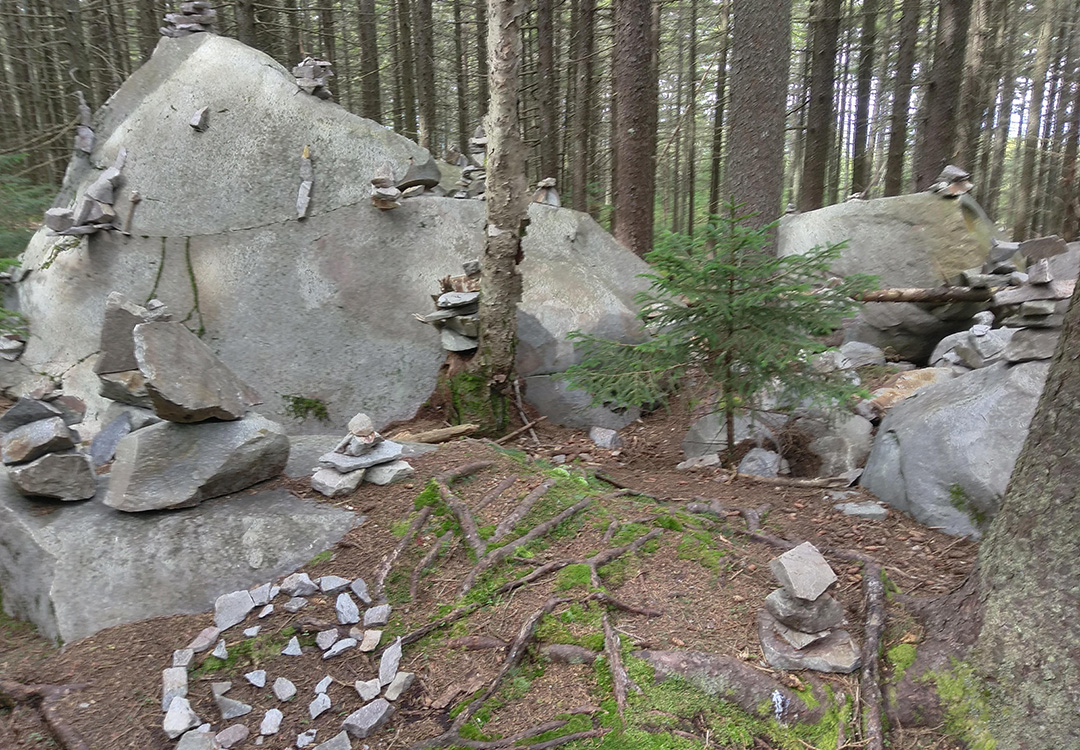
LEAVE ROCKS WHERE YOU FIND THEM
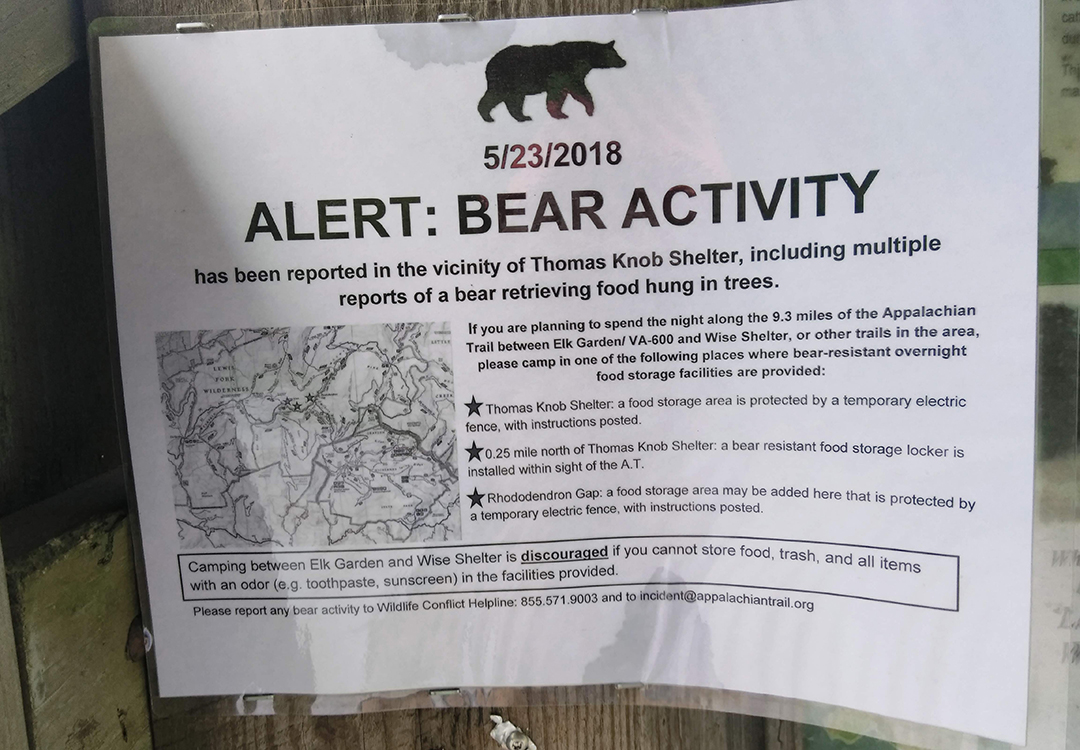
ALWAYS ADHERE TO LOCAL REGULATIONS WHEN IN WILD HABITATS
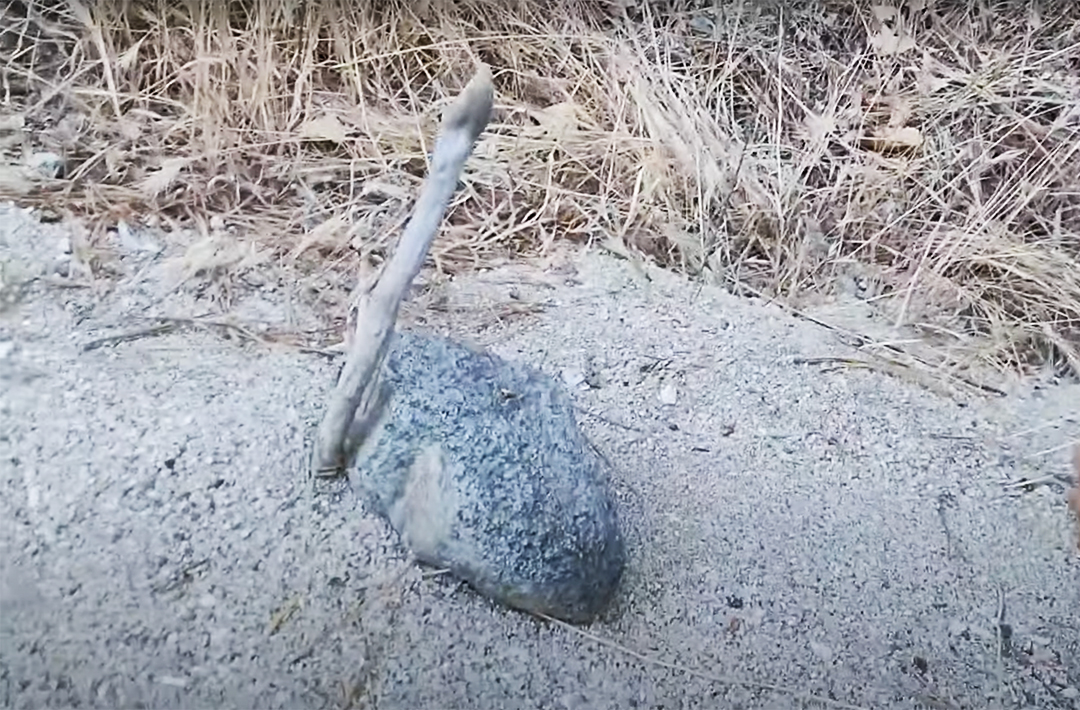
MARK YOUR CATHOLE SO THE NEXT HIKER DOESN’T DIG IT UP
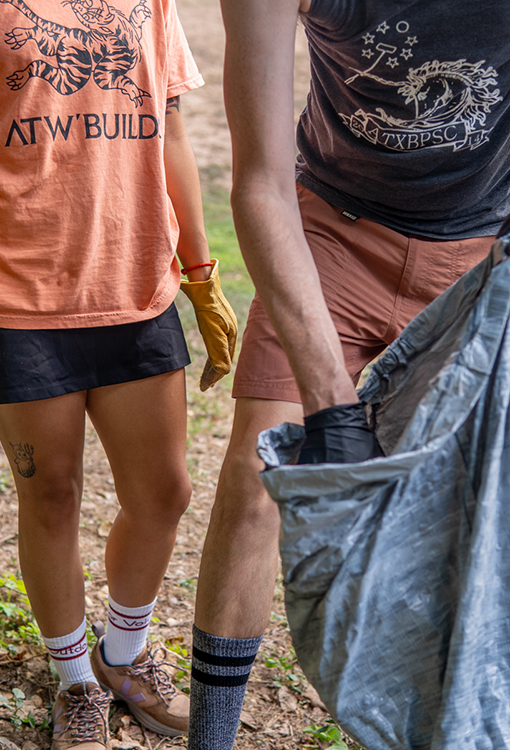
AN EXTRA TRASH BAG GOES A LONG WAY
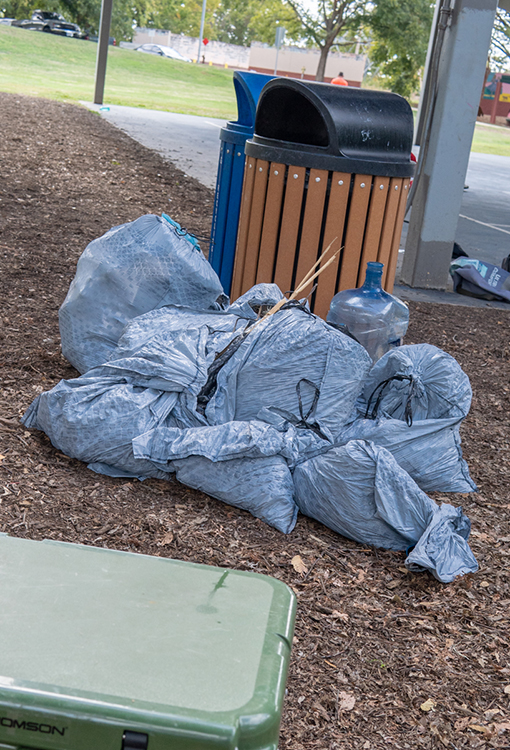
LNT HELPS NEIGHBORHOOD PARKS TOO
The Ethical Responsibility
By the very nature of a backpacking trip all persons should be passionate advocates for environmental stewardship. Opt to be a protector of the wilderness.
By adhering to LNT principles, contribute to preserving pristine landscapes for future generations to enjoy. A core aspect of Leave No Trace is respect for the natural world.
Thru-hikers have the privilege of experiencing some of the Earth’s most remote and untouched areas, and with this privilege comes the responsibility to minimize their impact.
Try to inspire others to explore the great outdoors! By embracing LNT principles, set a positive example for fellow adventurers, promoting responsible outdoor practices. Backpacking is not just about physical endurance; it’s also a journey of self-discovery. Embracing LNT principles can deepen this experience by fostering a greater connection with nature and leaving you guilt-free.
How to go about these principles
While the philosophical argument for LNT principles is compelling, their practical implementation is equally vital. Share your knowledge of Leave No Trace principles with fellow hikers and engage in advocacy efforts to promote responsible outdoor ethics so you can keep enjoying each area you embark upon.
Embracing these guidelines is not just a responsibility; it is a moral imperative for every hiker. These principles are not designed to restrict the freedom of outdoor enthusiasts but to preserve the very wilderness that makes their journeys unforgettable. By adhering to Leave No Trace, each hiker can ensure that the pristine landscapes they traverse remain unspoiled for generations to come. Backpacking should not only be a personal adventure but also a commitment to protecting the natural world, leaving a legacy of responsible stewardship for all to follow.
To get more information on LNT and the Seven Principles, as well as programs and training you can visit their website: https://lnt.org/
While the philosophical argument for LNT principles is compelling, their practical implementation is equally vital. Embracing these guidelines is not just a responsibility; it is a moral imperative for every hiker.


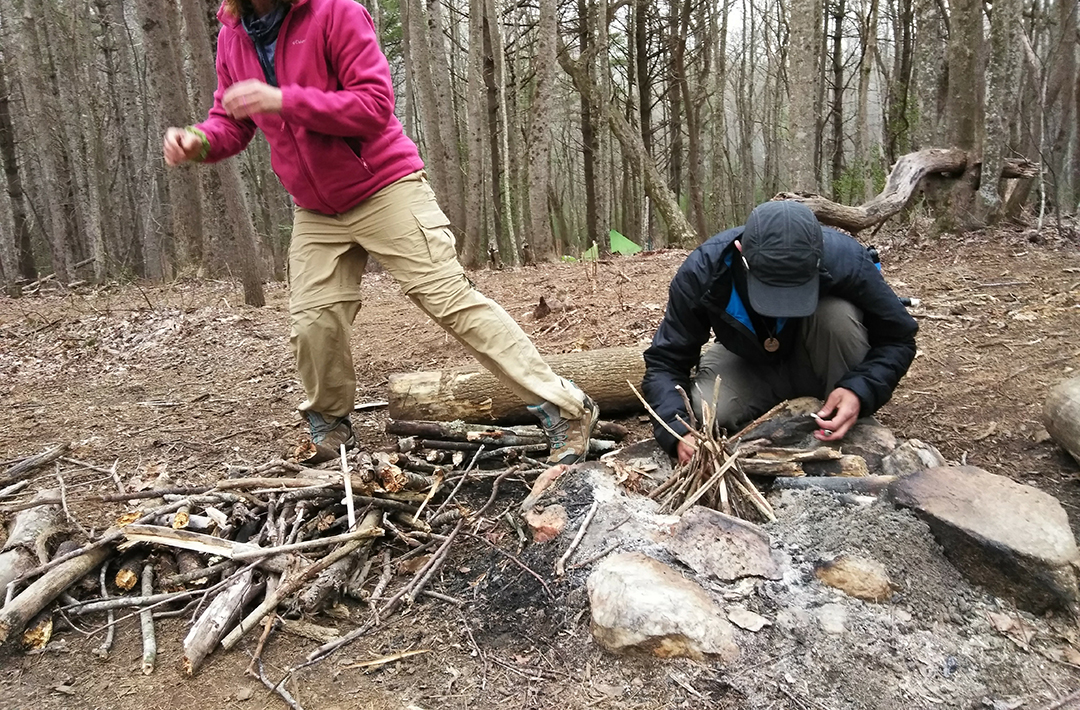
0 Comments